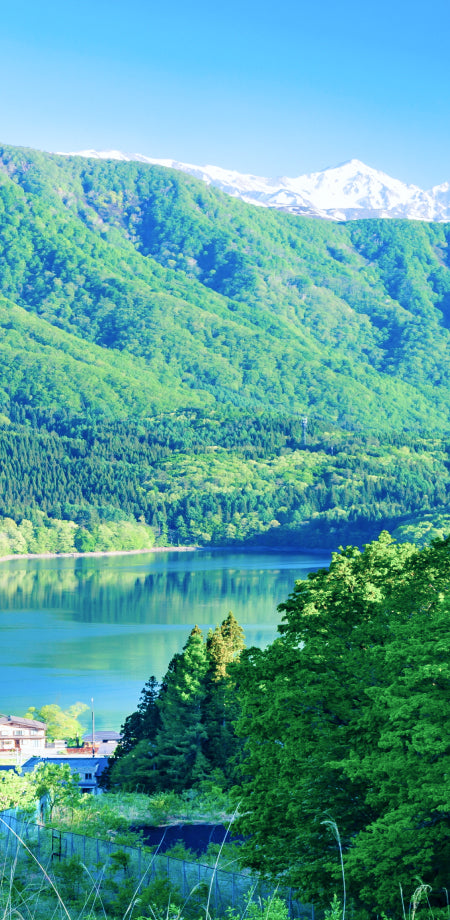投稿日:
更新日:
The roots of "soba culture"ShinshuIt's in! ?ShinshuSoba history exploration
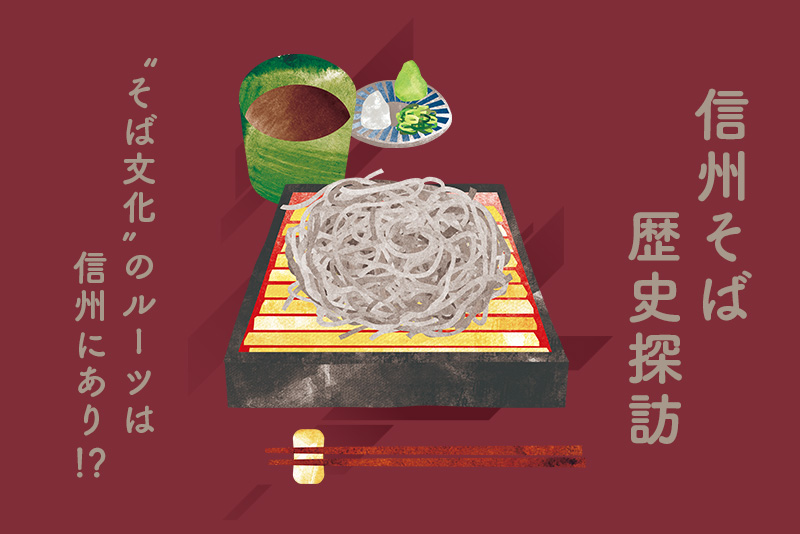
The new soba season has finally arrived. The soba noodles are suitable for cultivation in areas covered with mountains.ShinshuIt has been transformed and passed down through the local climate and history, and has become an indispensable part of people's daily food. " Speaking of sobaShinshu"We visit the birthplace of the country and unravel the reasons why.
It already existed in the Nara periodShinshuButterfly
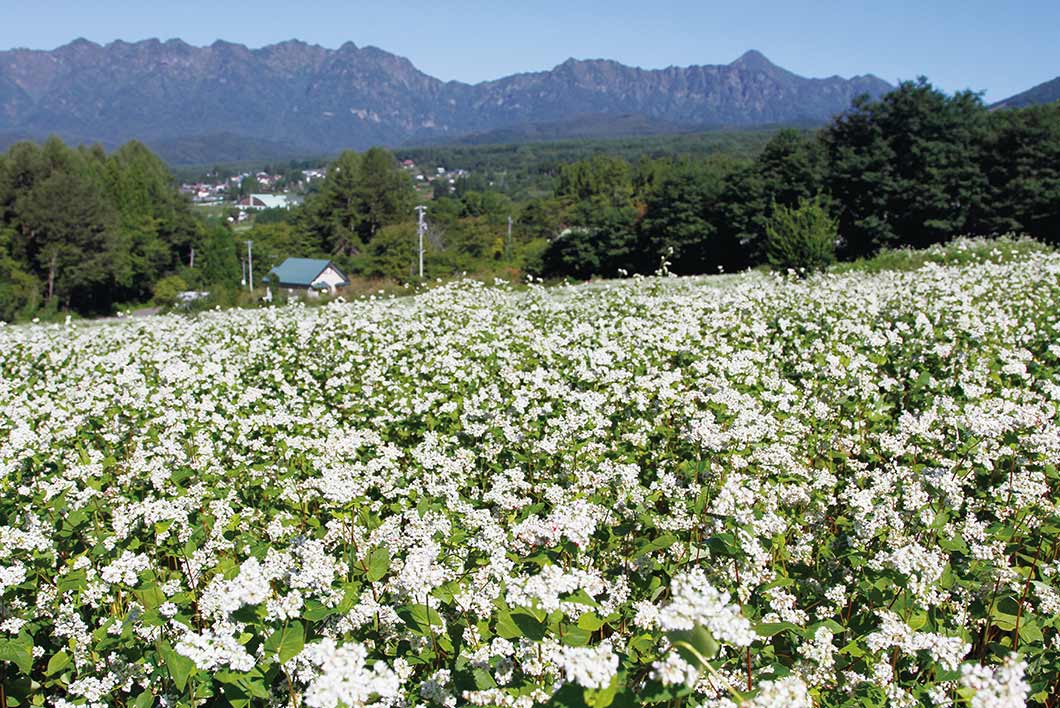
A soba field spreading out over Mt. Togakushi in the background.日本三大そばに数えられる「Togakushi SobaIt is said that the cultivation method was expanded by a monk who visited Mount Dogakushi, a mountain shōgendo, who visited Mount Dogakushi.
Speaking of sobaShinshu”So much so, Nagano The prefecture is a popular destination that represents the nation. Its history dates back to the Nara period. During his training, Enno Ozunu, who is said to have spread mountain shugjindo throughout the country, told him about the soba fruit he carried as a thank you for hospitality and how to cultivate them. Nagano There is still a theory that it was the beginning of soba cultivation in the prefecture. Also, according to the "Shoku Nihonki," in 722, soba noodles were encouraged to grow as a relief crop. As the Kamakura period began to arrive, stone thinness was introduced from China and buckwheat flour was produced, and there were many variations in eating methods.
"Soba-kiri" is said to have been born in Kisoji
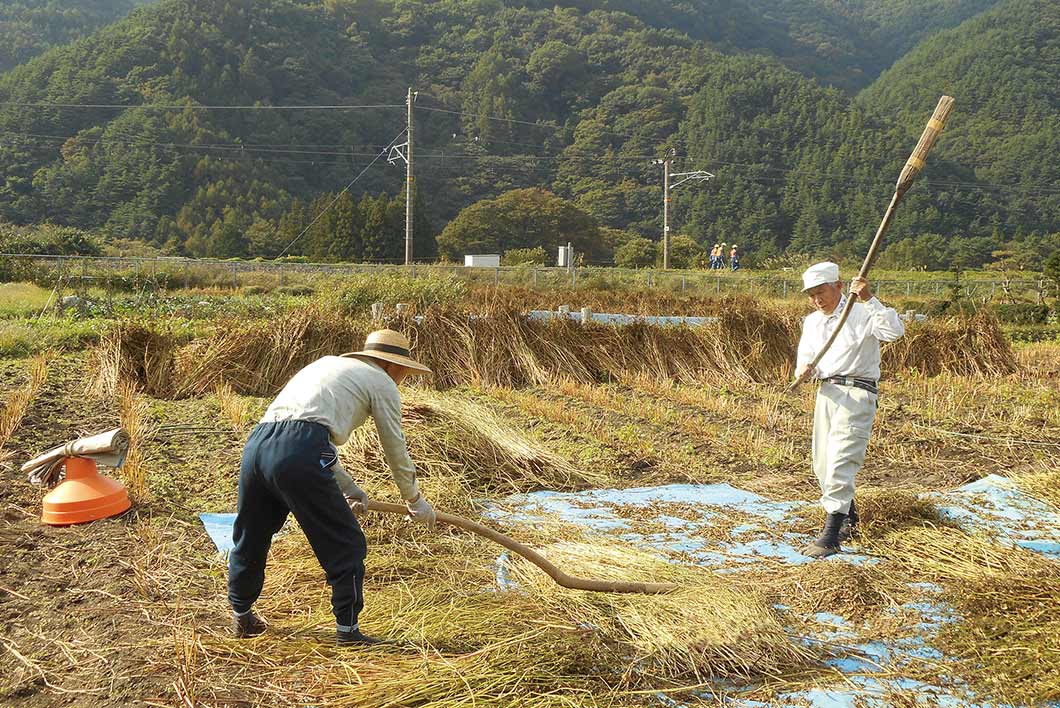
A scene of threshing soba noodles at the "Motoyama Soba Village." We use locally produced ingredients and use buckwheat flour made from a variety called Shinano Ichigo, which is grown in nearby fields.
The birthplace of soba chopping Motoyama Soba no Sato Corporation Association
Ochiai Isao
Soba is often eaten as noodles now, but in the past it was eaten by using methods such as porridge as its grains, grinding flour and soba rice, or grilling it. There are various theories, but the "soba chopping" is made by kneading the dough, spreading it thinly and evenly, and then cutting it into noodles with a knife is a type of noodles. Nagano The most likely theory is that it was born around Kiso Prefecture and spread throughout the country. Nagano In 1574, the Joshoji Documents, which is a record of the renovation of Joshoji, one of the three major Kiso temples in Okuwa Village, prefecture, stated that the temple was "Behavior Sohakiri Kanenaga." This is considered to be Japan's oldest record of soba noodles. In addition, in the "Selects of the Cultural Ceremonies" published in 1706 by Morikawa Koroku, a student of Matsuo Basho, it states that "soba kiri and Ippai are originally from the head temple inn in Shinano Province and are popular in many countries," and is said to have spread to the main temple inn in Kisoji. The lord often stays at the main inn, and there are also records that he "sauce soba noodles served with beans."
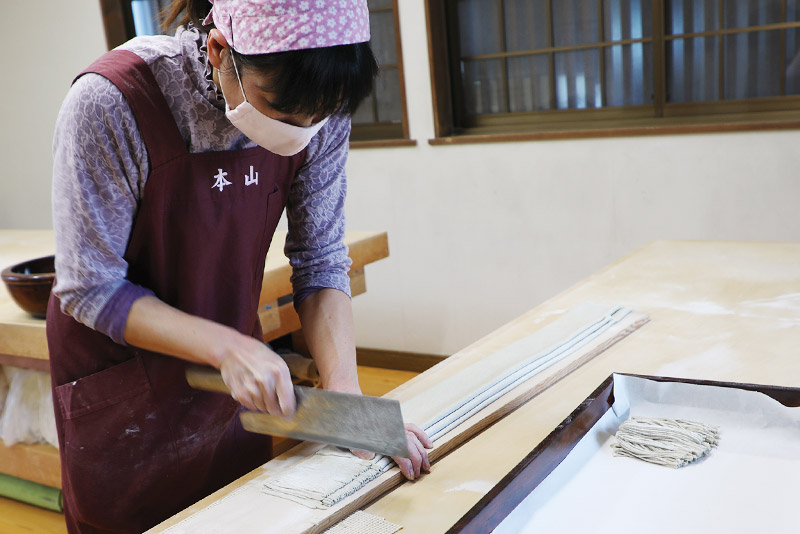
At Motoyama Soba no Sato, there are approximately 15 soba making craftsmen, mainly local women.
Due to these backgrounds, the soba gradually established its position from various daimyos to the Shogun family. From the mid-17th century onwards, soba-kiri became popular, mainly in Edo, and became widely popular.
ShinshuSoba History Exploration Vol.1 "Soba Cooking" spreads from Kisoji to the rest of the country
The head inn in Shiojiri City, which flourished as the 32nd post town of the Nakasendo road. In the 1707 edition of "Shokusho Literature," there was also a statement that "soba-kiri and Ippai were originally published from Shinano-ku's main temple inn and were popular in many countries."ShinshuIt is also an important place for talking about the soba culture.
In the past, the Honyama Inn had over 10 inns, serving soba noodles to many travelers.
Times have changed since the opening of trains, and now we don't see much of a trace of it, but at a home level, the tradition of soba-cutting has been handed down without interruption.
To convey the soba culture of the Motoyama to future generations

Ochiai Isao, chairman of the head of the Soba no Sato Corporation Association, the birthplace of soba chopping
Motoyama-juku has been eaten soba noodles as a "Food for the Day of Hare" with the flavor of each family, with eggs and nagaimo added to the tangle.
However, over time, the number of families making soba noodles at home has gradually decreased.
"Volunteers gathered to say that the history and culture surrounding the area of the Motoyama Inn could not be eliminated, and in order to pass on the soba making techniques and flavors passed down to local families to future generations, and to help promote the local community, they established the Motoyama Teki Soba Promotion Association, and in 1994, they founded the "Motoyama Soba no Sato Corporation Association, the birthplace of soba kiri," says Ochiai Isao, chairman of the association.
He held a store at local events, and in 1995ShinshuHe travels to Germany with the Ina Soba Promotion Association, which is the birthplace of soba, and is engaged in activities to convey soba culture both domestically and internationally, serving soba noodles at the official residence of Japan Consul General Düsseldorf.
Furthermore, as part of our efforts to widely convey the flavor of soba at Motoyama, Motoyama Soba no Sato, which serves hand-made soba, opened with the establishment of the association.
Recreate the old-fashioned soba noodles
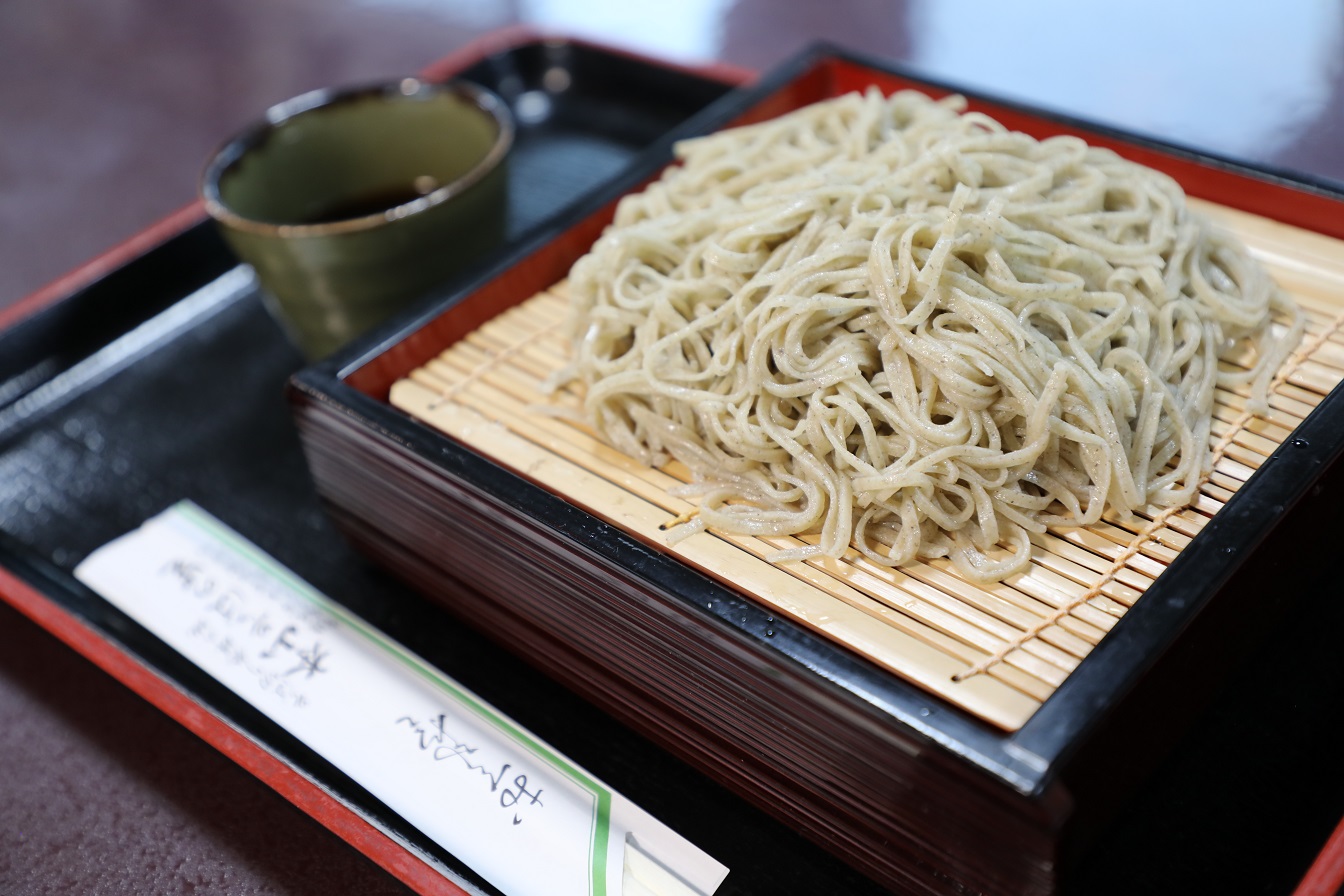
The soba served at Motoyama Soba no Sato is characterized by a thin, slightly black color.
This is apparently a recreation of the soba noodles that were once served in a post town.
It is said that cutting into thinners will give off a scent and improve the throat feel.
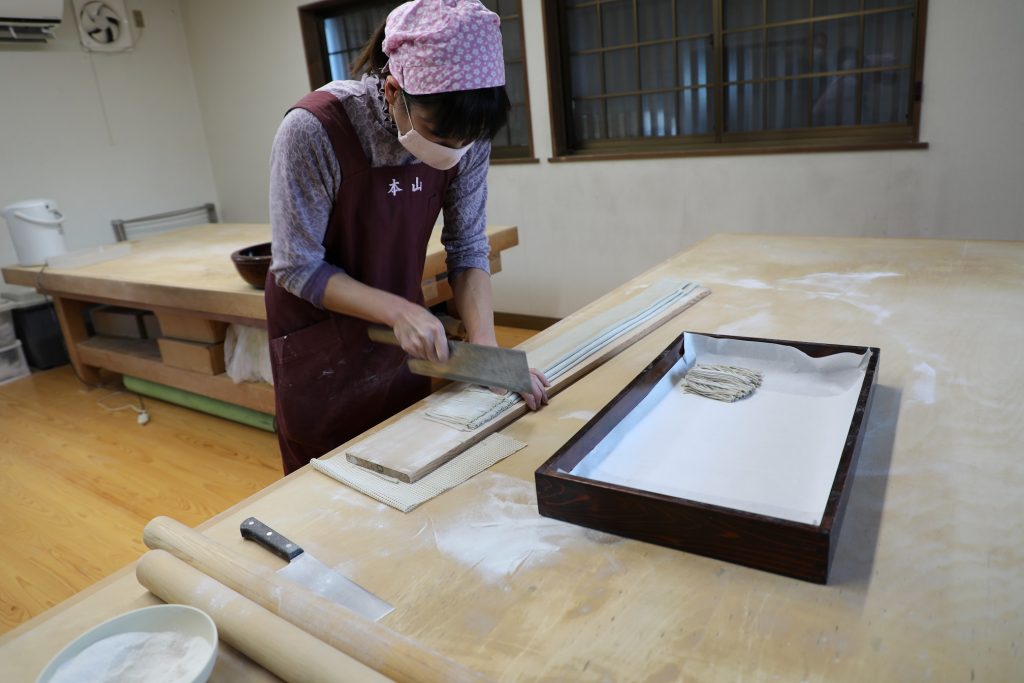
At Motoyama Soba no Sato, there are approximately 15 soba making craftsmen, mainly local women.
When you make soba noodles, it is common to place them in a square shape to make the length even when cut, but in order to faithfully reproduce the traditional manufacturing method, the main temple also features a round shape and cutting while holding it in place with your hand.
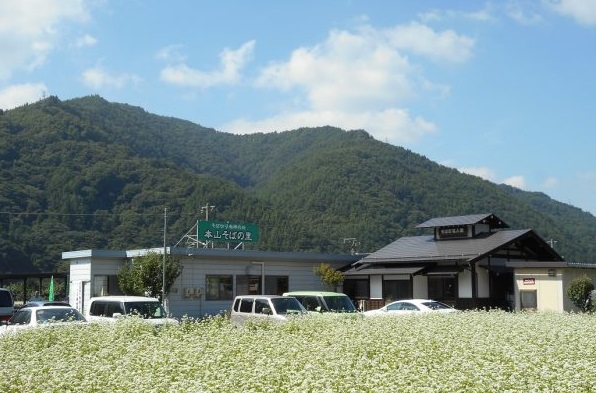
We also focus on locally produced ingredients, and use homemade buckwheat flour from the variety "Shinano Ichi" that is grown in nearby fields.
On busy days, more than 100 customers a day are served freshly cooked, freshly cooked and freshly boiled soba noodles, and at the end of the year, New Year's Eve soba noodles are received from not only in the region but also from within and outside the prefecture.
"We would like to continue the precious culture of "sobakiri" that has been passed down in the local community for generations, and continue to work as a leader to pass on to future generations," says Ochiai. The activities at Motoyama Soba Village continue.
[Motoyama Soba no Sato Company Association, the birthplace of soba chopping]
TEL 0263-54-6371 http://www.alps.or.jp/motoyama-sobanosato/
It spread out from the land of InaShinshuNosoba Culture
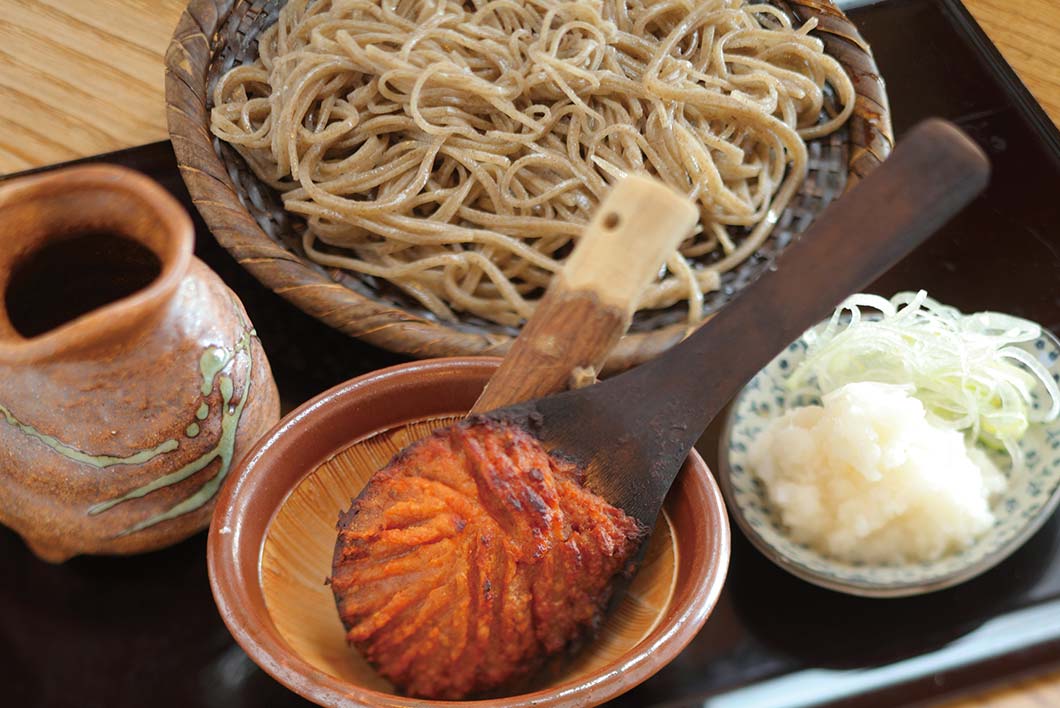
Takato Soba is eaten with spicy grated radish soup and grilled miso. Currently, you can enjoy it at 11 stores in the city.
ShinshuIna Soba Promotion Association, the birthplace of soba
Iijima Susumu
Far from the sea Nagano prefecture. In the past, ingredients for dashi (dish) such as bonito and kelp, which are essential for soba soup, were difficult to obtain, so in today's Takato, Ina City, you can eat "Karatsuyu Soba," a pickled soup made from miso grilled in the irori, melted in the daikon daikon soup. It is said that this "karatsuyu soba" is the dish that was written in Shimamura Toshimasa's Seiryuu Foto when Tokugawa Ieyasu visited Takato in 1582 and served a dish made with grated radish.
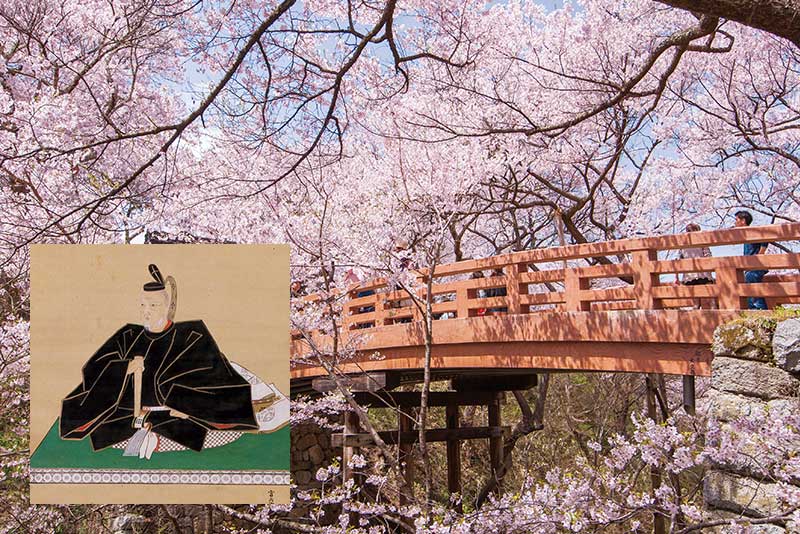
「ShinshuIna City is working on regional development under the name "The birthplace of soba noodles." In spring, many tourists visit the cherry blossoms at Takato Castle Ruins Park, which is also known as the "first cherry blossom in the world."
Hoshina Masayuki, the fourth son of Tokugawa Hidetada, the second shogun of the Edo Shogunate, was entrusted to Hoshina Masamitsu, the first lord of Takato Domain, and grew up in Takato. Masayuki apparently liked Takamine's side, and when he moved to Yamagata and Aizu,ShinshuIt is said that it also conveyed the soba culture of the area. That's what "ShinshuThis is why it is said to be the birthplace of soba noodles. Despite various theories, when Masayuki moved to the Yamagata domain, "cold soba" became the root of Yamagata, and in Aizu-wakamatsu, "Karatsuyu soba" is still popular under the name "Takato Soba" as "soba that was brought to you by Takato".
ShinshuSoba History Exploration Vol. 2 Scattered from the Ina LandShinshuNosoba Culture

Nagano Ina City is located in the southern part of the prefecture. In spring, many tourists visit Takato Castle Ruins Park in search of cherry blossoms.
Ina City has Takato Castle Ruins Park, also known as the "first cherry blossom in the world." "ShinshuIn this area, which is working on regional development, called "The birthplace of soba," it is said that since the Sengoku period, "Karatsuyu Soba," a soba made from pickled soup made from earthen daikon soup and miso grilled in the hearth, has been spurted in each household.
During the Edo period, Hoshina Masayuki (children name: Komatsu), who flourished as a castle town of the Takato Domain and was born as the fourth son of Tokugawa Hidetada, the second shogun of the Edo Shogunate, was raised here from the age of 7 to 26 when he was entrusted to the first Takato Domain lord, Hoshina Masamitsu.

Prince Hoshina Masayuki, famous as a rare and famous prince
After that, Masayuki went from 30,000 koku to the Yamagata domain to 200,000 koku, and was promoted to 230,000 koku, the Aizu domain.
It is said that the farmers and soba craftsmen were also brought along with them when the re-conversation was carried out, and Takamine's soba culture was introduced to various places.
ShinshuIna City has said that it has spread the culture of soba, which has been rooted in, to the public.ShinshuThis is why it is said to be the birthplace of soba noodles.
Takato Soba was a place where I couldn't eat even after visiting Takato.
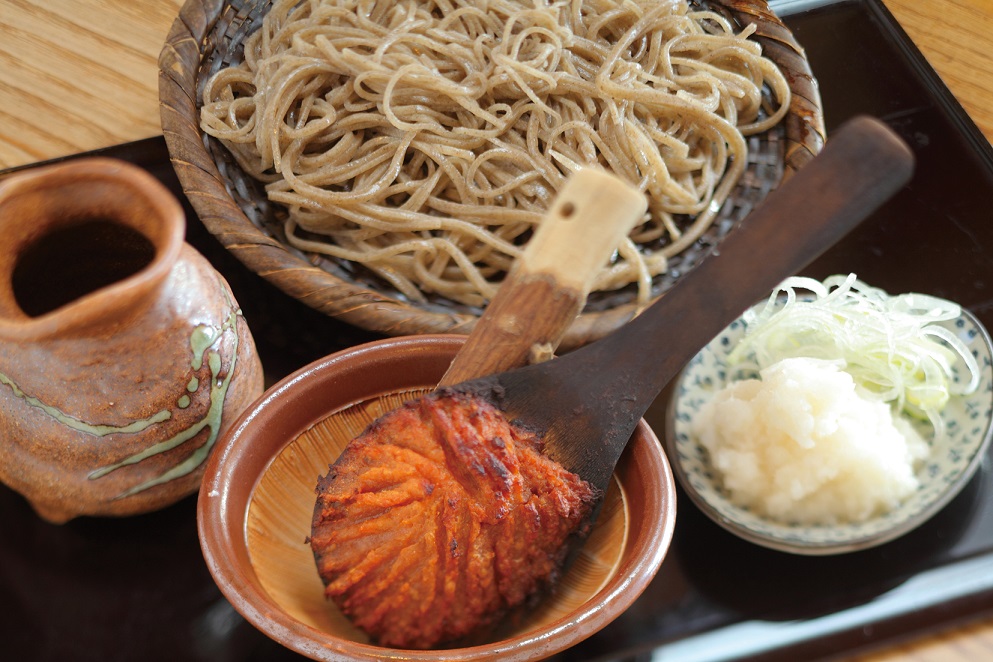
Takato soba noodles with grilled miso and spicy radish
However, until just about 20 years ago, there was only one restaurant in Ina city that served hand-made soba noodles.
This is because there are so many people in this area that say, "If you can't make soba, you won't be married," and it is common for soba to be eaten at home, so it was hard to make a business out of eating out.
However, Takato, Ina City, is visited by 300,000 to 400,000 tourists during the cherry blossom season. Many people have been saying that they want to eat soba noodles after visiting this area.
"The voices of "Takato soba noodles, which are named after Takato, are in Aizu, so why can't they eat them in Takato, which is supposed to be the real thing?" and the desire of the local food and beverage industry to "provide hand-made soba noodles" to those who visit Takato, coinciding with the idea of agricultural cooperatives and governments to recommend soba noodles as an encouragement for crop change, and were established to convey the flavor and culture of soba that has been handed down within each household.Shinshu"Ina Soba Promotion Association, the birthplace of soba noodles." The person who told me this was Iijima Susumu, the chairman of the Promotion Association.

ShinshuIijima Susumu, chairman of the Ina Soba Promotion Association, the birthplace of soba noodles. After a diverse range of work experiences, including bureaucrats and chefs, he has been serving as the chairman of the Ina City Council since May 2020.
First, we visited Aizuwakamatsu, where Takato Soba is located, and started our activities by retrieving its origin and history.
The members of the Promotion Association, who witnessed the popularity of "Takato Soba" by people as soba that was introduced from Takato, began working on activities to re-import the name from Aizu-wakamatsu and develop soba that had previously been familiar with "Karatsuyu Soba" in Takato as "Takato Soba."
The steady activities, such as promoting the area in the metropolitan area and promoting local awareness, have paid off, and the number of hand-made soba shops, which only had one, has now expanded to 14.
The Irinoya Native Revival Dream Project started with just six tablets
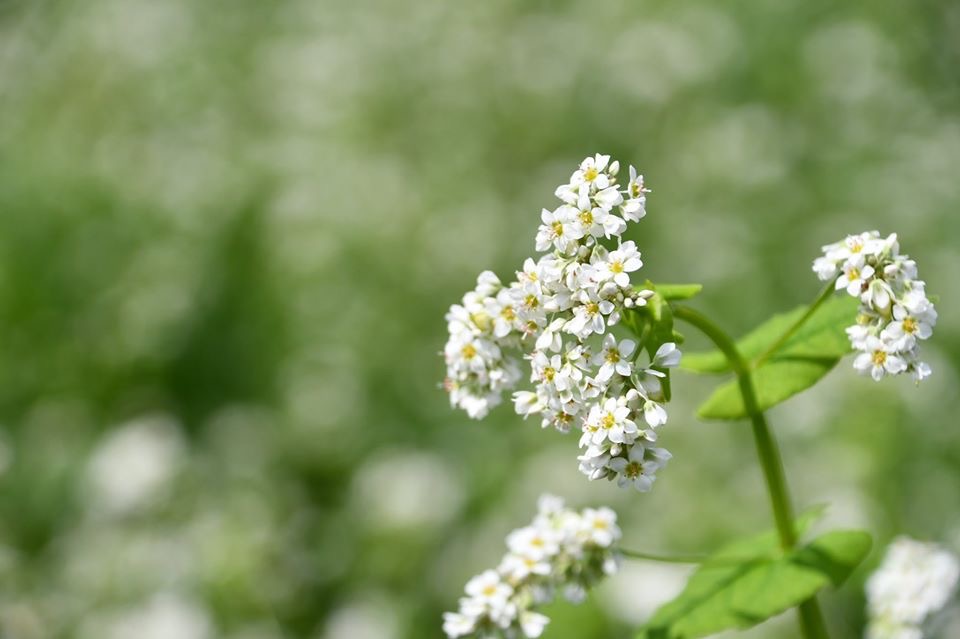
Irinotani native species with a very strong flavor and a fragrant nutty aroma
As a further step, the Ina Soba Promotion Association has been working on a project to revive the native soba species called Irinoya Native Plant.
"I've been hearing from the elderly locals that "old soba noodles were small and had a strong flavor and delicious." When I looked into it, I found out that in the Irinoya area, a soba noodles that are said to be comparable to Togakushi and other places, native species were eaten in the olden days. I was hoping to somehow revive this native species and recreate the ultimate flavor of Takato soba noodles, which the lord of the Edo period would have eaten," says Iijima.
The Irinoya Native Revival Dream Project started with a species that only weighs 20g, which was left in the prefecture's vegetable and fruit tree experiment station. It is said that only six germinated in the first year. After that, as they continued to grow and harvest, last year it grew to the point where it was able to harvest about 2,400 kilos, and can currently enjoy the flavor at nine stores in the city.
[ShinshuIna Soba Promotion Association, the birthplace of soba noodles.
TEL 0265-78-4111(In the Ina City Tourism Association)
The creation of methods and eating methods that suit the times
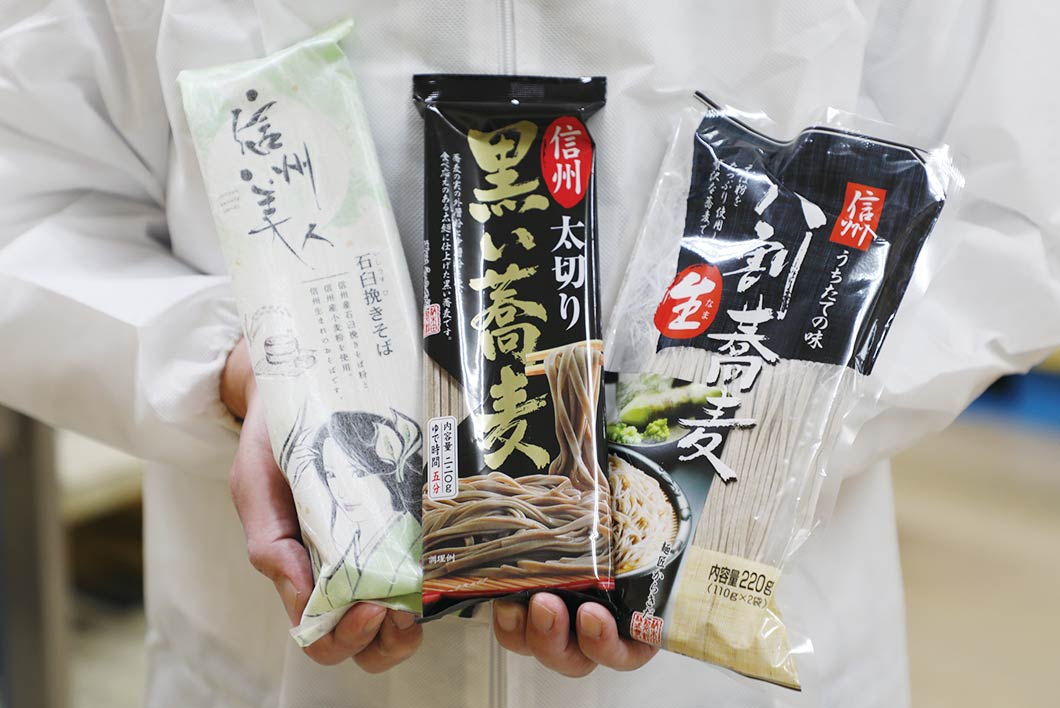
A popular product from Garakida Flour Milling Co., Ltd., where we spoke about dried soba noodles. We develop products tailored to the needs of our customers.
Garakida Flour Milling Co., Ltd.
Arakida Toyo and Yamauchi Yoshiki
The freshly-made soba noodles are fragrant and flavorful, and while they can be enjoyed in the throat, they also have a side to them that is difficult to store. Therefore, "Hi Hoshi Soba" was developed with the aim of keeping it safe so that you can enjoy soba easily anytime. In the Meiji PeriodNagano CityIt is said that the beginning was when Shioiri Sandaiyoshi, a member of the soba restaurant Yamatoya Honten, dried the fresh soba noodles and turned them into a product, and since then, dried soba production has become popular all over the prefecture. Even now Nagano The prefecture boasts the overwhelming number one share. We have also created authentic dried soba noodles that are perfect for the throat and flavor that are just as good as fresh noodles. In addition, dried soba noodles are produced that meet the needs of 100% soba noodles, which were considered difficult to use dried noodles due to technological advances, trial and error by craftsmen, due to the production process, and products that do not use salt and can also enjoy soba hot water. In addition to zarusoba and kake soba, dried soba can also be enjoyed as a snack when deep-fried in oil, and can be enjoyed in a different way than raw soba.
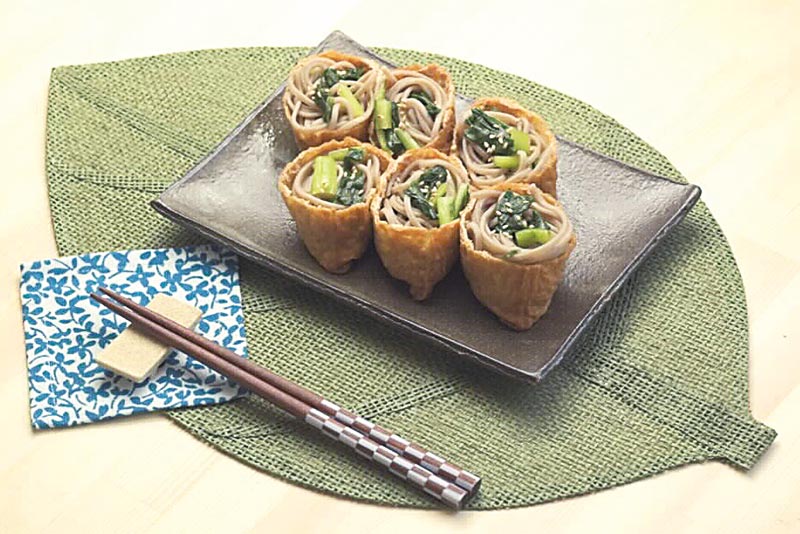
The Agarakida Flour Milling Co., Ltd. website introduces various recipes for soba noodles.
Furthermore, "Ekisoba," which is a pioneer of fast food, has long waits for train replacements.TimesI'd like to serve food to passengers.Karuizawa TownIt is said to be a service that was born in.
In this way,ShinshuSoba has been making changes in sympathy with her everyday life. In recent years, overseas exports of dried soba and half-fresh soba have also grown, and this culture has spread beyond Japan and around the world.
ShinshuSoba History Exploration Vol.3 The birthplace of dried soba noodles Nagano CitySoba noodles are produced with a focus on scent and throat feel.
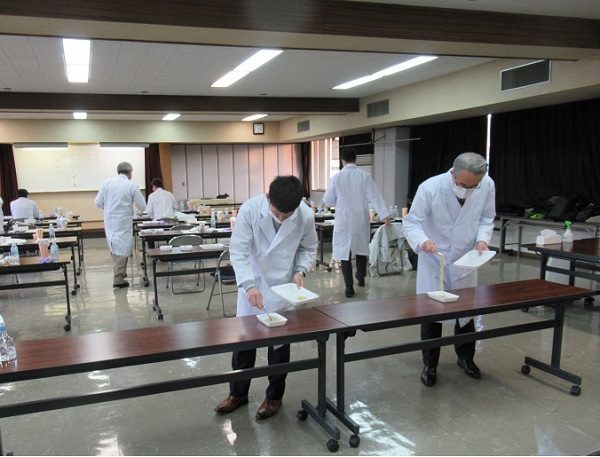
Last year's "ShinshuSoba competition"
The freshly-made soba noodles have a high aroma and can be enjoyed in the throat, but they also have a side to them that they are not able to be preserved.
Therefore, "dried soba" was developed to be highly preserved.
In the Meiji PeriodNagano CityIt is said that it started when Mr. Midaiyoshi Shioiri, a member of the soba restaurant Yamatoya Honten, dried the raw soba noodles and turned them into a product.
After that, dried soba noodles have been made all over the prefecture, and even today Nagano The prefecture boasts the overwhelming number one share.
Nagano In the prefectureShinshuEvery year, we aim to improve the quality and technology of soba noodles.Shinshuそば品評会」が開催されるなど、 Nagano Noodle makers in the prefecture are working hard to create better products by competing with each other.
Dried soba noodles are also produced that meet the needs of people, such as 100% soba noodles, which were considered difficult to use dried noodles due to technological advances, the trial and error of craftsmen, and products that do not use salt and allow you to enjoy soba bath water.
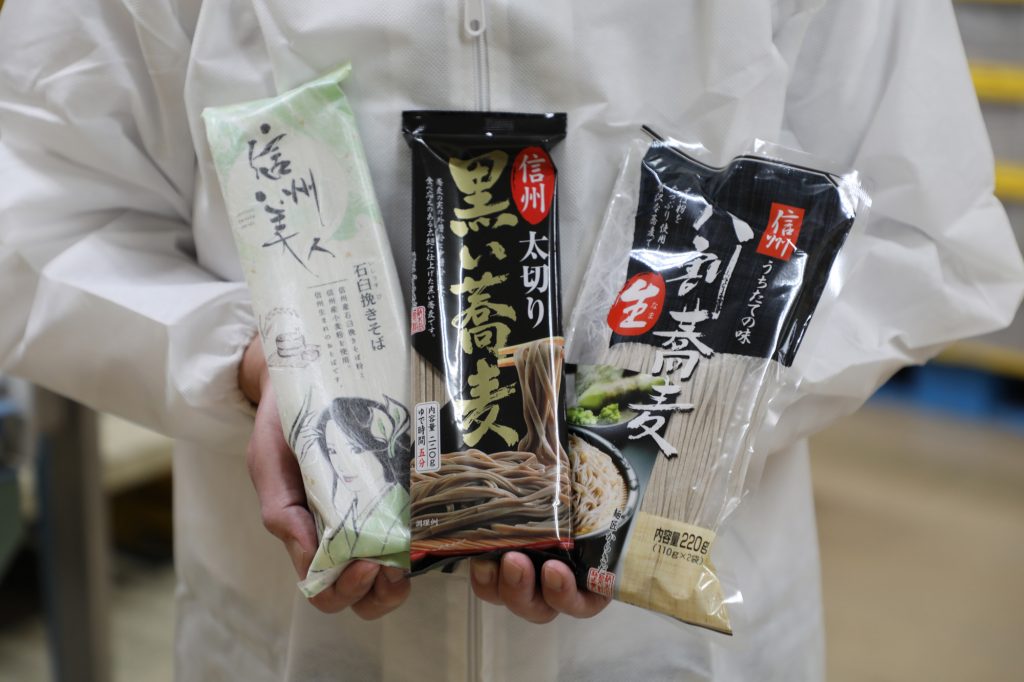
This "Birthplace of Inushi Soba"Nagano CityGarakida Flour Mill was founded in 1952 as a flour mill.
Dried noodles began production in 1959. We handle all kinds of noodles, including soba noodles, udon noodles, hiyamugi, and somen noodles, and we manufacture a variety of types, mainly 80% and 70% of soba noodles, with different ingredients in soba flour and the thickness of the noodles.
"Since we manufacture wheat flour, our strength is that we can choose the flour that we use to connect when it goes well with buckwheat flour," says President Karakida Yutaka.
The characteristics of the soba noodles vary depending on the production area, and the flour they are connected to can produce completely different flavors, so we cherish the customer's feedback and make dried noodles with a focus on the aroma and throat feel.
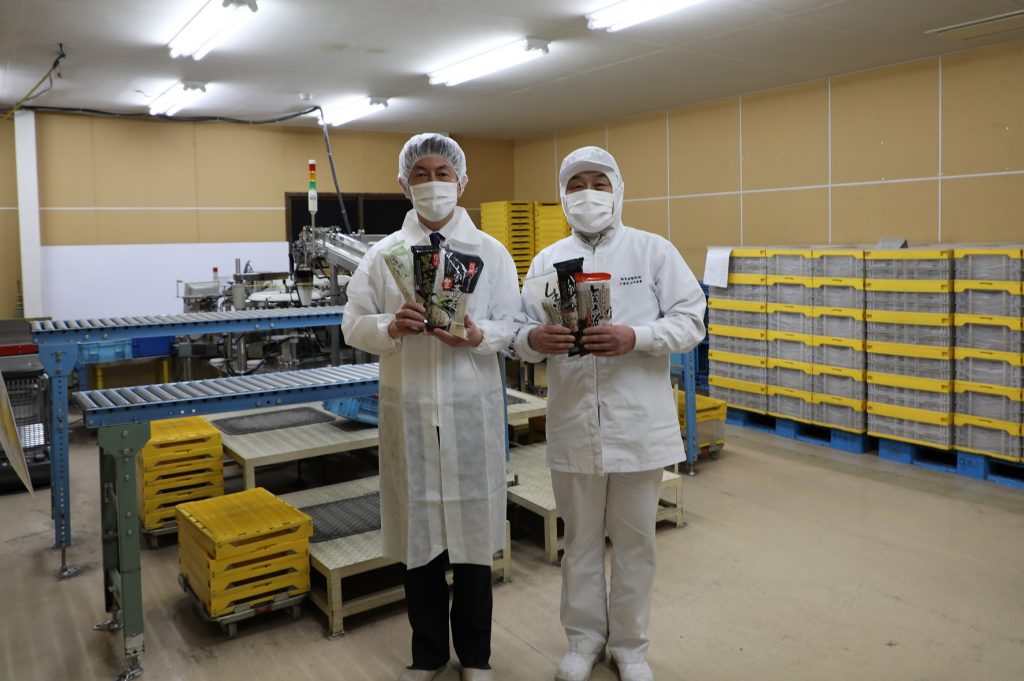
We spoke to you by Mr. Akida Yutaka (left), CEO of Karakida Flour Milling Co., Ltd. and Mr. Yamauchi Yoshiki (right), Director of Kawanakajima Factory.
While household consumption of noodles such as udon and hiyamugi is stagnating, soba noodles are said to be growing due to the recent rise in health-consciousness.
When I asked Mr. Yamauchi, the factory manager, how to eat it, he said that boiled soba noodles can be served on a plate with tomatoes, cucumbers, or kaiwari to make them into a salad, then poured over them with dressing or used as a substitute for pasta noodles. It is said to be recommended as a snack with alcohol by frying it in oil, and dried soba noodles can be enjoyed in a variety of flavors, making them a versatile ingredient.
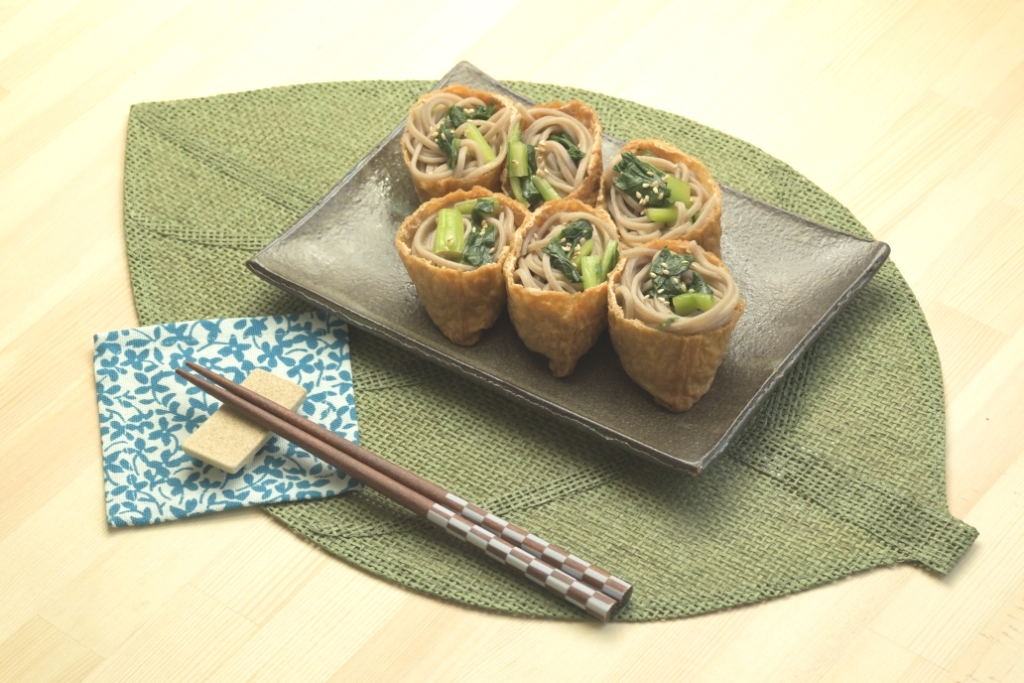
Galakida Flour Milling Co., Ltd. websiteHere we introduce various soba noodles arrangement recipes.
The company also first produced and sold "Handai Soba" to produce soba that combines the flavor of raw soba with the shelf life.
The company was developing the product with a manufacturer that mainly uses apple cider vinegar, and produced noodles that can be stored at room temperature for about 90 days, while retaining the taste, flavor and soybean soba noodles.
It seems that in recent years, dried soba and half-fresh soba have also been selling overseas.ShinshuThe soba noodles, which have been rooted in the climate and climate of Japan, are now spreading overseas as well.
[Galakida Flour Milling Co., Ltd.]
TEL 026-292-0890 https://www.karakida.co.jp/
This article is information as of October 2021.
Please note that the products we carry may have changed.















